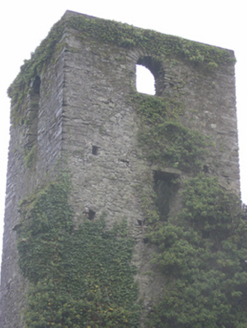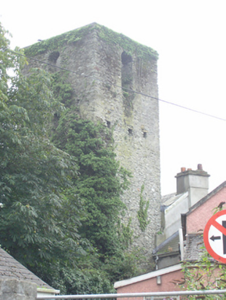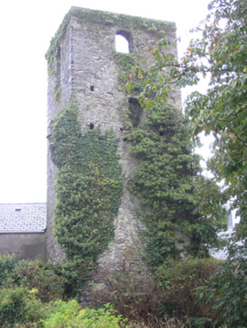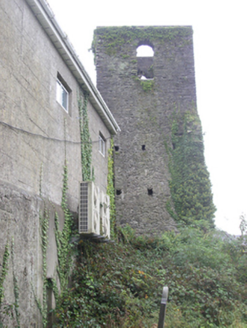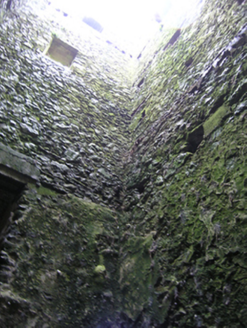Survey Data
Reg No
12504175
Rating
Regional
Categories of Special Interest
Archaeological, Architectural, Historical, Social
Original Use
Church/chapel
Historical Use
Church/chapel
Date
1540 - 1580
Coordinates
247024, 198442
Date Recorded
29/08/2008
Date Updated
--/--/--
Description
An early modern church ruin, built c. 1556. A three stage, west tower survives, built with a mixture of roughly coursed limestone and sandstone blocks with flat lintel doorway at ground floor level in the east wall, indicating that the tower was at the west end of the church. Flat-headed window on second floor east wall below belfry stage and tall round-headed windows in the upper stage facing in cardinal directions. Put-log holes to second stage. A tall recess at first floor level in the interior of the east wall may indicate an entrance to a gallery level at the west end of the church. Set within partially walled graveyard, south west of former Maryborough Fort.
Appraisal
Old St. Peter's Church is one of the oldest structure surviving in Portlaoise and is generally dated to c. 1556, however it is not depicted on the 1563 schematic map of Maryborough Fort and the surrounding houses. The earliest definite evidence for its existence is a reference by David Good, vicar of Maryborough, in 1598. It is, however, clearly marked on the 1721 map of Portlaoise. As Portlaoise was a plantation town, it would appear that the area had no religious associations prior to the sixteenth century and that the foundation of the church possibly dates to as early as Queen Mary's reign. John Wesley, founder of Methodism, is said to have preached in the church on three occasions and found it to be "one of the most elegant churches in the whole Kingdom". With the re-location of St. Peter's Church to Main Street in c. 1800 the building began to be neglected. The tower dominaties the skyline and is a defining element in the character of Church Street and is an important element in the architectural, historical, social and archeological heritage of Portlaoise.
